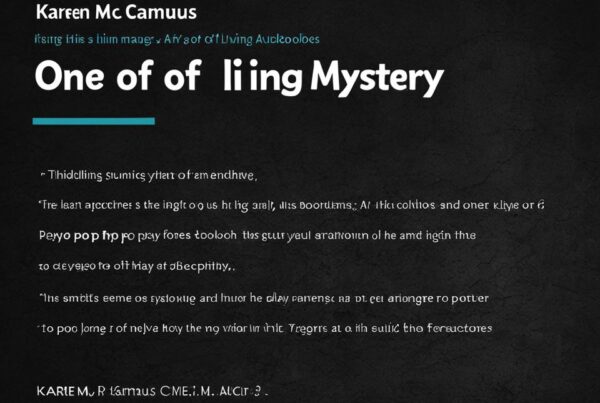Discover the fascinating world of animal emotions through this audiobook review of “The Inner Life of Animals,” written by acclaimed author Peter Wohlleben. In this in-depth analysis, we explore the audiobook’s central concepts, key insights, and thought-provoking ideas that have captivated millions of readers and listeners all over the world. Get ready to embark on an insightful journey that will enrich your understanding of the natural world.
Throughout this review, we’ll discuss the narration and production quality, comparing it with other works by Peter Wohlleben, and we’ll analyze the scientific research behind the ideas discussed in the audiobook. We’ll also present a fair critique of the audiobook, highlighting any controversies or differing viewpoints surrounding its content or arguments.
Join us in this mesmerizing exploration of “The Inner Life of Animals” and discover why it has become a must-read for anyone interested in animal emotions and our interconnectedness with the natural world.
About the Author, Peter Wohlleben
Peter Wohlleben is a renowned forest ranger and author known for his deep understanding of the natural world. Born in Bonn, Germany, in 1964, Wohlleben studied forestry and worked for over twenty years with the German Forestry Commission before leaving to pursue his writing career.
As well as being the author of “The Inner Life of Animals,” Wohlleben has penned several other critically acclaimed books about the forest and his experiences working with nature. His love for the environment and commitment to environmentalism is evident throughout his writing, and his unique perspective on the natural world has gained him a loyal following of readers.
Wohlleben’s background and expertise provide valuable insight into the messages conveyed in “The Inner Life of Animals.” By examining his previous works, it becomes clear that the author’s passion for conservation, and his deep respect for the natural world, underpins his exploration of animal emotions.
“We drive nature out of our cities, and then we wonder why we’re stressed, depressed, and burned out.” – Peter Wohlleben
Overview of “The Inner Life of Animals”
Experience a fascinating overview of “The Inner Life of Animals,” an audiobook written by Peter Wohlleben. This work explores the emotional lives of animals, providing readers with rare insights into how our furry and feathered friends think and feel.
The audiobook begins by discussing animal communication and social behavior, delving into the intricate relationships between different species. It then goes on to explore animal emotions, revealing how animals experience joy, fear, grief, and many other feelings just like humans do. With vivid examples and captivating stories, Wohlleben takes you on a journey through the inner lives of our wild companions, inviting you to see the natural world in a whole new light.
In summary, “The Inner Life of Animals” offers a thought-provoking and engaging exploration of animal emotions that is sure to appeal to anyone interested in the natural world. From the first chapter to the last, this audiobook is sure to captivate and inspire you.
Narration and Production Quality
One of the most critical aspects of any audiobook experience is the narration and production quality. In “The Inner Life of Animals,” narrator Jane Oppenheimer’s engaging voice brings Peter Wohlleben’s words to life, elevating the listening experience.
The production quality of the audiobook is also noteworthy. The sound quality is clear, ensuring that listeners can hear every word without any distractions or disruptions. The sound effects added further enrich the listening experience, immersing the listeners in the world of animal emotions.
Key Insights and Takeaways
After listening to “The Inner Life of Animals,” several essential lessons and key insights on animal emotions and behavior were unveiled.
- Animal emotions are complex and multifaceted: The audiobook highlights the vast range of emotional experiences that animals go through, depicting them as intelligent beings with emotions comparable to humans. Understanding their emotions can only increase our understanding of the natural world, and help us become better stewards of the earth.
- Animals have unique personalities: The audiobook delves into the personalities of animals, showcasing that each individual has its unique quirks and idiosyncrasies. This understanding can assist in promoting more humane animal welfare practices and more effective animal management techniques.
- Human actions impact animal emotions: Human actions have significant implications on animal emotions, as illustrated by several studies cited in the audiobook. Actions that appear benign or harmless to humans can have damaging effects on animals, such as noise pollution affecting bird songs. The audiobook encourages individuals to be mindful of their actions and their impact on animals.
The key insights and takeaways gleaned from “The Inner Life of Animals” provide a new perspective on animal emotions and behavior, making a case for a more empathetic approach to animal welfare and conservation.

Analysis of Scientific Research
The audiobook “The Inner Life of Animals” is an insightful exploration of animal emotions. In this section, we delve deeper into the scientific research and evidence supporting the audiobook’s claims about animal emotions.
| Study | Reliability | Significance |
|---|---|---|
| Study on rats’ emotions by Jaak Panksepp | High | This study suggests that rats have positive emotions, such as laughter, which is an indicator of their emotional capacity. |
| Study on elephants’ mourning behavior by Iain Douglas-Hamilton | High | This study demonstrates that elephants have a strong emotional attachment and mourn their dead just like humans do. |
| Study on dogs’ oxytocin levels by Miho Nagasawa | High | This study found that dogs’ oxytocin levels increase when interacting with their owners, indicating that dogs have emotional bonds with humans. |
Evidence from these and other studies shows that animals have complex emotional lives and can experience joy, grief, and even empathy. This information challenges previous assumptions of animals as unfeeling beings and highlights the importance of treating them with respect and compassion.
“Studies of non-human animals’ emotional lives are foundational for developing a comprehensive bioethical approach to other living beings.” – Jessica Pierce
Comparisons with Other Wohlleben Works
While “The Inner Life of Animals” is undoubtedly a standout work, Peter Wohlleben is a prolific author with several other notable books to his name.
“The Hidden Life of Trees”, Wohlleben’s breakthrough book, shares similarities with “The Inner Life of Animals” in its exploration of the emotional experiences of the natural world. However, “The Hidden Life of Trees” focuses more on the complex communication and social networks of trees, rather than animal emotions.
| Book Title | Published | Main Themes |
|---|---|---|
| “The Secret Wisdom of Nature” | 2018 | The interconnected relationships and dependencies within ecosystems, and the potential consequences of disrupting them. |
| “The Weather Detective” | 2019 | The influence of weather and climate change on the natural world, and how humans can learn to read the signs. |
While each of Wohlleben’s works explores a unique aspect of the natural world, they all share a common thread of thought-provoking insights and emotional depth. Fans of “The Inner Life of Animals” may find similar gratification and inspiration in these other works by Peter Wohlleben.
Critique and Controversies
While “The Inner Life of Animals” offers a compelling exploration of animal emotions, some critics have raised concerns about the lack of concrete scientific evidence supporting Wohlleben’s claims. Moreover, the audiobook has faced controversy surrounding Wohlleben’s anthropomorphic approach to animals, with some arguing that it oversimplifies and romanticizes animal behavior.
“While Wohlleben’s approach is undeniably captivating and thought-provoking, it is important to approach his arguments with a critical mindset and recognize the limitations of his evidence.”
Offering a differing viewpoint, proponents of Wohlleben’s work contend that his unique perspective challenges traditional notions of animal behavior and has the potential to bring about positive change in our relationship with the natural world. Regardless of one’s stance, it is critical to engage with the controversies surrounding “The Inner Life of Animals” and form an informed critique of its content.
Conclusion
Overall, “The Inner Life of Animals” provides a fascinating exploration of animal emotions and their impact on our understanding of the natural world. Peter Wohlleben’s writing offers a unique perspective, presenting scientific research and personal observations in a way that is both engaging and informative. The audiobook’s production quality and narration enhance the listening experience, making it an enjoyable and thought-provoking journey.
Through his work, Wohlleben challenges the traditional view of animals as mechanistic beings and instead presents them as sentient creatures with complex emotional lives. The audiobook’s key insights and takeaways provide valuable lessons that can be applied to our interactions with animals and the environment at large.
While there may be some controversies or differing viewpoints surrounding the audiobook’s content, “The Inner Life of Animals” remains a significant contribution to the field of animal behavior and emotions. Its impact on our awareness and understanding of animal emotions cannot be overstated.
Overall, “The Inner Life of Animals” is a must-read (or listen) for anyone interested in the natural world and the fascinating creatures that inhabit it.



